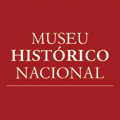Welcome
The Museum of Astronomy and Related Sciences of the Ministry of Science, Technology and Innovation is glad to host the 31st edition of the Symposium of the Scientific Instrument Commission. The conference is open to all interested in the history, preservation, documentation and use of scientific instruments.
The Conference will take place between 08 and 12 October 2012 and will include visits to the most important collections of scientific instruments in Rio de Janeiro.
Meeting Point - buses from Catete to MAST
Programme
Call for Papers
Deadlines
Submission of Abstracts: July 01, 2012
Early Registration: until July 15, 2012
Regular Registration: until August 30, 2012
The Host: The Museum of Astronomy and Related Sciences
Museu de Astronomia e Ciências Afins (MAST), which opened to the public in 1985, is a research institute pertaining to the Brazilian Ministry of Science, Technology and Innovation. One of its main activities is to preserve its collections, especially the most important, its collection of scientific instruments, which grants MAST its identity as a museum of science and technology. The museum stands in the grounds of the old National Observatory, and occupies a number of buildings belonging to it. These historic buildings, as well as the collections that originated within them, are preserved by a Federal Law passed in 1986 (IPHAN). MAST’s main building houses the museum’s visitable technical store opened to the public, where much of the collection of historical scientific instruments is kept.
The MAST collection is one of the most important of its kind in South America. It contains 2000 objects. Around 1700 belong to the old National Observatory, and were used in service and research of great importance to the country, like determining and broadcasting the official time in Brazil, forecasting the weather, astronomical phenomena, delimiting Brazilian borders, magnetic mapping of Brazilian soil, and others. Most of these instruments date back to the nineteenth and early twentieth centuries, though some of the more aesthetically interesting pieces, like the quadrant by J. Sisson and the G Adams theodolite, are from the 1700s. Many of the objects are connected to astronomy, topography, geodetics, geophysics, meteorology, weather and optical measurements. They are typical of this kind of institution, but the collection also touches on other scientific areas, like electricity, magnetism and chemistry.










